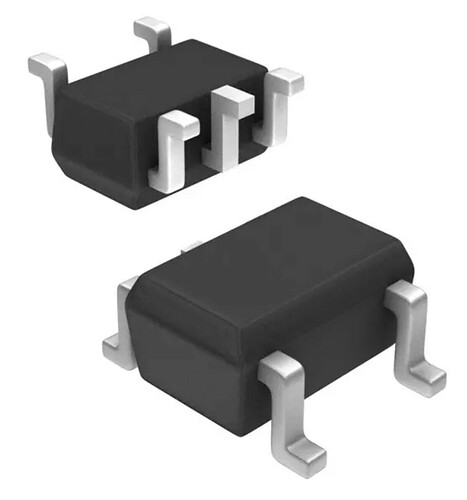What is the solder paste stock like in the lab lately? Is there enough for a few quick connections?
I have a tube of SAC305 I can drop off OMW home. Admittedly it is a few years old and missing the cap and plunger.
We don’t have any solder paste that I know of in the electronics lab–mostly because it would need to be refrigerated. It goes “bad” after a couple months if you don’t seal it with a Nitrogen atmosphere and keep it cool.
We do have some solder wire, last I checked. I think it was 24AWG Tin-Lead Rosin Core. If you’re doing really tiny rework, I have 30AWG SnPb without a flux core at home and can bring some in as it’s a real nightmare to try and purchase something that tiny (the minimum purchase requirements are irritating–you have to purchase like $500 rolls).
That having been said: solder paste for connections? That’s a little … odd. Could you clarify a bit?
Electronic solder paste is usually used in conjunction with a stencil to print onto a printed circuit board. Normally, you don’t use solder paste with electronic connections, you use standard solder wire with rosin flux (generally in the core of the wire).
Mechanical solder paste is a very different beast. It normally has an acid-based flux and is generally silver-based. It’s the kind of thing that plumbers use to solder copper pipe connectors together.
I suspect Altex has the mechanical solder paste as well as the electrical solder wire. What are you trying to solder?
I have my own lead-free solder wire so that won’t be a problem.
What I’m looking to do is add a few components to my car’s instrument cluster PCB to add a feature that was not available in the US (the low washer fluid warning light). All of the required pads exist, they just don’t have components. Most of them could probably be done with an iron but they are all surface-mount and at least one is tiny and in a “crowded” area where I wouldn’t want to put an iron.
Maybe “connections” was the wrong term? Let me know if anything needs clarification.
Ew. Automotive? Are you sure that the pads are exposed or do they have a really thin clear conformal coating over them? In addition, they probably have ROHS unleaded solder on them.
Solder paste is probably going to be suboptimal for this. The little balls will roll everywhere and cause shorts if you don’t get them all melted.
If I were doing that rework, I’d first tin the pads without an IC using a soldering iron and a wire solder with lead in it. The Pb wire solder will drop the melting point of the solder. It will also likely burn off the conformal coating. I’d probably even use a wick to clean the pads once and then tin them again.
After that, I’d put sticky flux on the board, place the ICs and use a heat gun to get them mounted. The tinning should be more than enough solder to mount small SMT components.
You can use lead-free for all this, but it’s definitely going to make your life a lot more difficult.
The pads are conductive and can be probed with a multimeter, I think I was able to take that conformal coating off (what I took off came off with rubbing alcohol, it almost felt like syrup, is that conformal coating?).
Very good to know. I would rather do this with lead free solder to keep the cluster RoHS compliant (and safe). I’ve been using it pretty much my whole career.
The parts I need to add are two resistors, an LED, maybe a capacitor, and a transistor array (5-TSSOP package). Shouldn’t be too difficult.
If that 5-TSSOP package (which might in other places be a SC-70 or SOT353 package) is the most challenging one in the job, then wire solder and flux and an iron and decent tweezers are all that’s really needed. Some wick wouldn’t hurt either, and cleanup kit like isopropyl and brushes or swabs.
Probably a wire-solder method would be quicker and overall preferable to doing it with paste. The idea of sorta surgically applying paste to pads without a stencil, and doing a hot-air “spot-reflow” on em could be less fun than it sounds. I still believe it would basically work, but it’d be fussier than doing one part at a time with an iron.
I do these all the time at work. Just put regular solder on the pads with an iron, smallest hot air nozzle, air flow way on the low end. Kapton tape plastic stuff around it that could get hit by the hot air and melt. Tape loosely, the tape isn’t much insulation, it’s there to redirect air away from the surface and needs the air gap underneath the loose tape
Or, in most cases you can just put a 5-TSSOP on by hand. Hot air rework is more definitely required for QFN packages (contact is hidden underneath part) or BGA.
